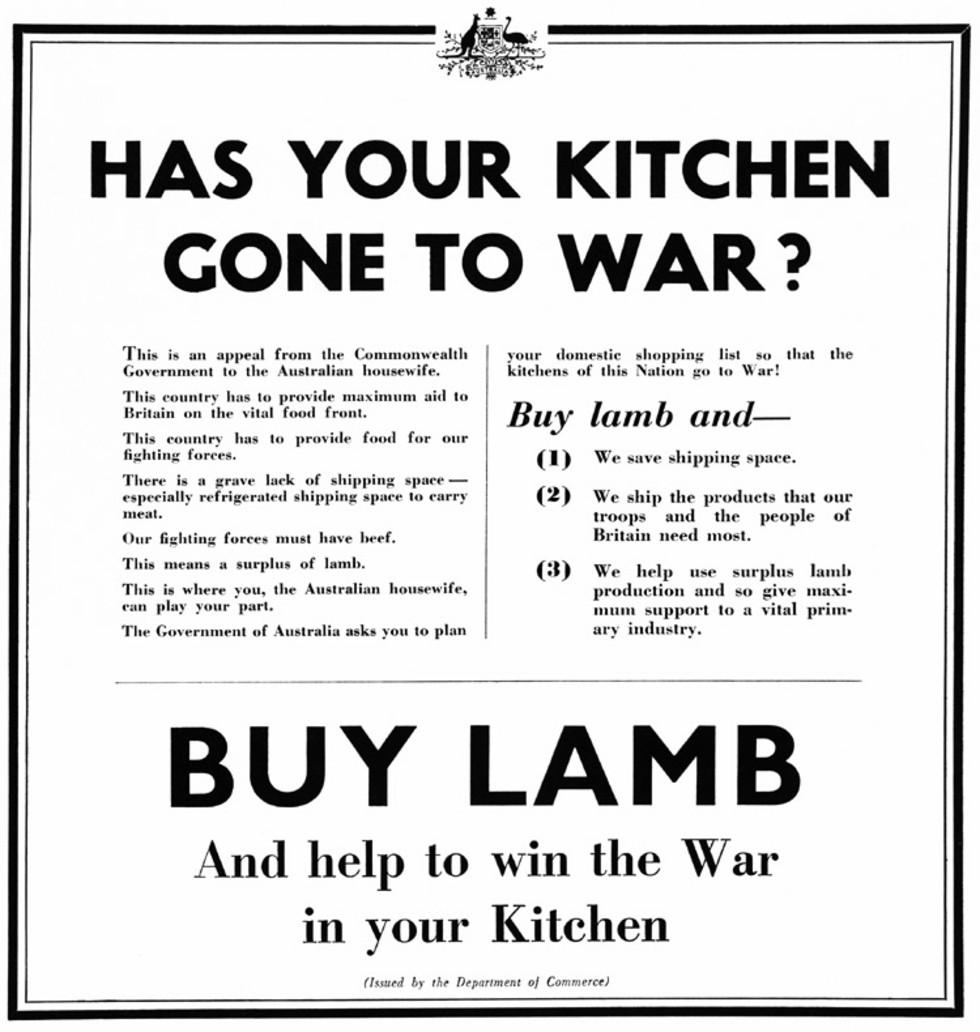


About this record
This is a black-and-white poster entitled 'HAS YOUR KITCHEN GONE TO WAR?' with a message in bold print at the bottom, 'BUY LAMB and help to win the War in your Kitchen'. The text is a message from the Australian Government, urging the Australian housewife to buy surplus lamb in order to reserve beef for export to the troops abroad and to support the primary sheep industry.
Educational value
- Is an example of a poster being used to deliver messages from the Australian Government to its citizens during World War II (1939–45) – in 1939 Australia entered the war, declaring war on Germany, and then in 1941 declared war on Japan.
- Promotes the purchase of lamb, implying that the housewife had a choice of meats – this indicates that the poster was produced prior to 1942, when food rationing was introduced; people were asked to strip away luxuries and much less food was available.
- Reveals that meat was exported in refrigerated ships – while refrigeration was commonly used in the 1940s in industrial kitchens, it was still too expensive for most Australians, who used ice chests to cool their perishables.
- Refers to the lack of shipping space – during the war, shipping was controlled by the Australian Government and ships were needed to carry troops, weapons and supplies overseas to the war front.
- Refers to the government regulation of the export of meat under which lamb was not to be exported overseas – the National Security Regulations overrode the Meat Export Control Act of 1935 in order to meet the needs of the United Kingdom, Australia and the Allied military services.
- Shows the official Commonwealth Coat of Arms, which includes two Australian native animals, the red kangaroo and the emu, holding a shield that contains the badges of the six states of the Commonwealth; behind the animals is a spray of golden wattle and underneath is a scroll with the name 'Australia' on it.
- Is an example of the work of the Commonwealth Advertising Division, set up in 1941 within the Department of Information to promote government messages throughout World War II.
- Demonstrates that text is less emotionally engaging than posters with visual images to convey emotions and support the messages of the text.
Acknowledgments
Learning resource text © Education Services Australia Limited and the National Archives of Australia 2010.
Need help with your research?
Learn how to interpret primary sources, use our collection and more.

